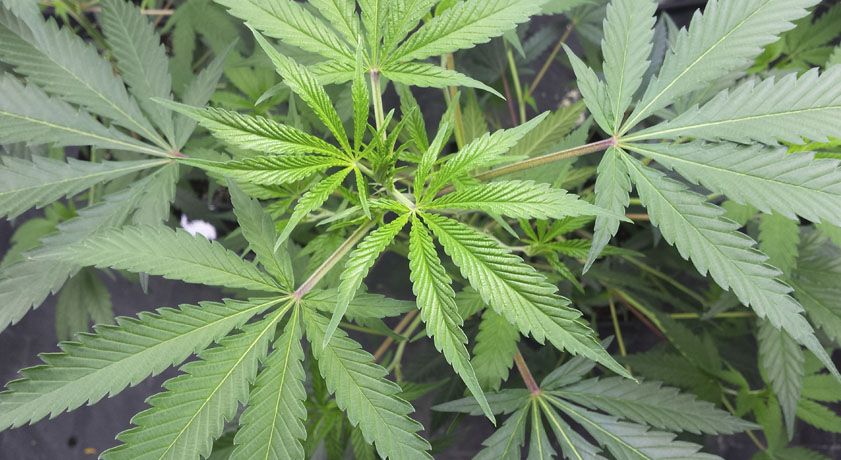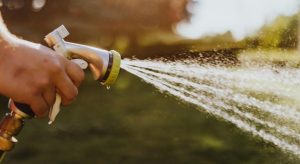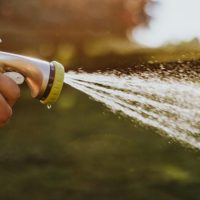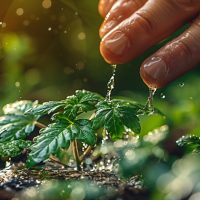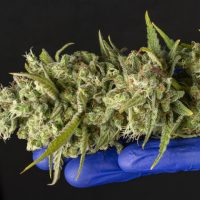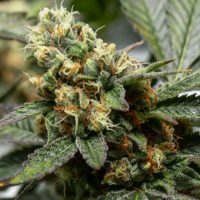The Importance of Watering Cannabis Plants
Water is the transportation device used by nutrients in order to get inside the plant, and it’s in charge of distributing nutrients (carbs, vitamins, hormones) around the plant’s metabolic system. It also dissolves the nutrients given to the plant, moistening the substrate, adding oxygen to soil and roots, while also maintaining pH levels etc…
Watering with the correct amount and in the correct way is just as important as knowing when to water. If you don’t water your plants when they need it, they will dry up, and if you water them too much they’ll starve of oxygen in the roots, which is why it’s important to find the perfect balance.
Watering is the most repeated chore when growing cannabis; try and give your plants water with low mineral concentrations (osmosis water is ideal), unwanted mineral salts can block your plants’ roots, stopping them from absorbing nutrients correctly. If you’re using tap water, we recommend using enzymes frequently in order to avoid mineral salt built up.
Important Factors When Watering
1. Controlled watering
Cannabis, when in the growth stage, needs small cycles of moisture and drought.
- Small moisture and drought cycles allow for more air in the substrate, which favours root growth and plant metabolism.
- Before watering, make sure that the substrate isn’t soaked; it needs to be kept airy. Soaked or permanently moist substrates don’t contain the necessary oxygen for roots, and they can also make it easier for harmful pathogens and microorganisms to flourish.
- Water when the substrate has lost part of its moisture, this stimulates root growth; roots will stretch out in search of water.
- Roots are the main source of nutrient intake for your plants, so it’s important to grow out a large root system so you can water and feed your plants more, or else you may accidentally overwater of over-fertilizer your plants.
- During the flowering stage, your cannabis plants should have already developed a large root system, so you won’t need to use moisture and drought cycles any more to stimulate growth; you can water more often now, making sure that the substrate isn’t constantly soaked.
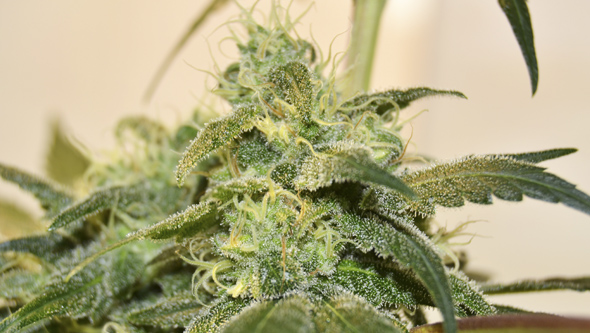
2. High quality water
If you use contaminated water or water with unnecessary mineral salts, your plants won’t be able to grow properly, which is why water quality is so important.
If we look at it like a scale, osmosis or distilled water would be at the top, followed by mineral water with tap water in the last stop.
- If your tap water has a high concentration of mineral salts (EC), like most tap water that flows through cities, then you’re better off spending a bit extra on an osmosis filter. These are used to get rid of any substances and most of the chlorine in tap water. Chlorine makes water potable and it keeps pool clean by killing microorganisms. Using tap water with chlorine won’t kill your plants, but it will make fungi and beneficial bacteria symbiotic activity scarce in your cannabis plants.
- You can use enzymes in order to avoid mineral salt accumulation in the substrate and roots.
- If you use water from a tank, an affordable way to oxygenate the water is by using an air stone and a small air pump. You can also use CO2 tablets and oxygen tablets in your tanks to improve oxygenation even more.
3. Check and adjust pH and EC levels
- Whether you’re feeding nutrients to your plants or you’re just watering them, you still need to know the mineral salt concentration in your water, as this determines your plants general state.
- It’s incredibly important to keep an eye on the pH levels of your water (between 6.2 and 6.5 when growing in soil) after adding your nutrient mix to it; the pH in your nutrient solution will determine the pH in your substrate and your plants’ capacity to absorb nutrients.
- In hydroponic grows it’s important to keep pH levels between 5.2 and 5.5 for proper nutrient absorption; the wrong pH level in a hydroponic system can ruin your plants within hours.
4. Water slowly and evenly
Water slowly and evenly over the substrate, using the amount required for each individual plant; if you water too fast, it will end up draining out the bottom of the flowerpot without actually wetting the substrate.
- In the wild, cannabis plants get water naturally from rainfall, which falls soft and constant, allowing the soil to absorb and distribute the moisture. This is what you’ll need to try and imitate when growing cannabis.
- Water follows water: this means that when you water your plants with large amounts of water at once, it doesn’t necessarily absorb through the substrate, rather it drags nutrients and erodes the substrate without being evenly distributed. This is why you should water slowly and allow it to be slowly absorbed; this allows the nutrients to stay in the soil instead of being pulled out like during a root flush.
- However, it is good for your plants to drain a small amount of water through the bottom. This can help avoid mineral salt build up.
When to Water Cannabis Plants
Your plants need a certain amount of water, and the amount of water they need changes as they grow; at the start of the growth period you’ll need to use small amounts, increasing the amount of water and nutrients as the plant grows.
Cannabis plants show very obvious symptoms when they urgently need water, such as general leaf drooping, although it’s best not to reach that point. In order to know how often you should be watering, you can use a few key factors:
-
Plant and flowerpot size
Cannabis plants start off with very small roots. This is why you should water carefully to start with; if the roots spend too long without oxygen you may kill the plant. Like we were saying above, we highly recommend going through periods of moisture and drought without letting the substrate dry out completely.
As your plants grow, their root system grows along with them. If their substrate is full of roots and there’s no empty soil, you’ll need to water more often. This is why you should transplant before starting the flowering period so that your plants have enough substrate to retain moisture for longer.
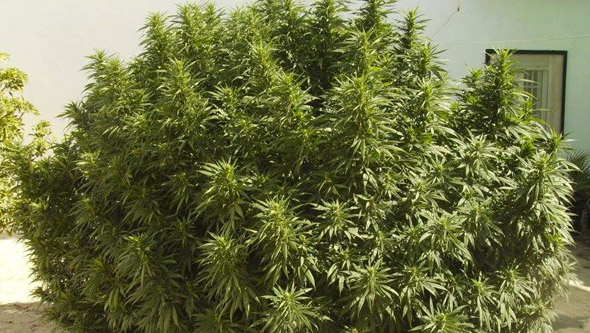
-
Weather conditions
When it comes to indoor growing, you’ll need to create the ideal parameters and conditions for your plants (temperature, humidity, ventilation…), which makes watering much easier. However, outdoors you can’t control the weather but you can help your plants out when the weather is less than ideal.
An example of bad weather for your plants would be high temperatures, which can cause your plants’ roots to get too hot. In this case, your plants need more water and they’ll have trouble absorbing nutrients properly. In order to help your plants out when in this type of situation, you’ll need to try and keep their roots cool, aired out and moist.
Apart from using white flowerpots, which reflect light instead of absorbing it, or Smart Pot flowerpots which allow roots to breathe, you should also check on your plants and their substrate every day in order to figure out a balanced watering schedule. As we were saying earlier, play around with a combination of moisture and letting it dry out; don’t let it stay soaked for says, or else your plants may be more prone to fungi, insects and pathogens.
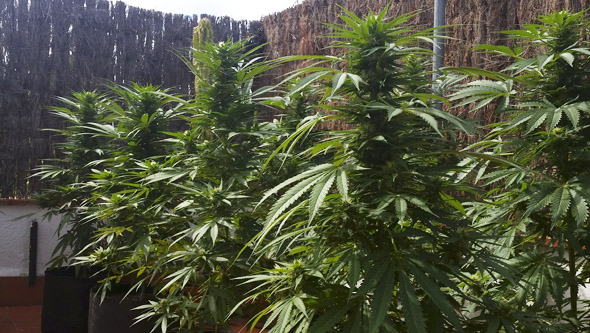
-
Substrate
One of the fastest and most efficient ways to know if you should water is by simply putting your finger in the substrate a few centimetres to see if it’s moist. You can also lift up the flowerpot to see how much moisture it’s retaining. If you have a large grow and you don’t have time to check plant by plant, choose the smallest one in your grow. This plant will have absorbed the most water and you can use it as a reference in order to calculate when to water your plants without soaking them.
We recommend using expanded clay at the bottom of your flowerpot in order to drain out any excess water and avoid soakage; this is usually where the water ends up.
How Much Water to Use
There isn’t an exact measurement of water that we can give you for your plants, as it depends on your growing conditions and the state your plant is in. Generally, you should water using about a fourth of your flowerpot’s size. So, if you have an 11L flowerpot you should water with about 2.75L (you can figure this out by dividing the volume of your flowerpot by 4).
However, you’ll need to keep in mind all of the parameters we mentioned before; they determine the amount of water you should be using.
Watering Methods
There are different methods when it comes to watering cannabis plants, and depending on your grow set up you’ll benefit more from certain methods:
1 – Manual Watering
Manual watering is all type of watering that involve watering cans, bottles, hoses, or watering wands in a non-automatic way.
- Fill your watering can, bottle or water tank with osmosis water if possible.
- Add your nutrient solution if necessary.
- Measure pH and EC levels.
- Water slowly, evenly spreading water around the surface of the plant.
- It’s always better to spread water than simply por it out on one spot on the surface; use a watering can with holes or a watering wand.
- Make sure that a small amount of water comes out the bottom of the flowerpot after each watering.
- Don’t allow the substrate to get too moist or dry.
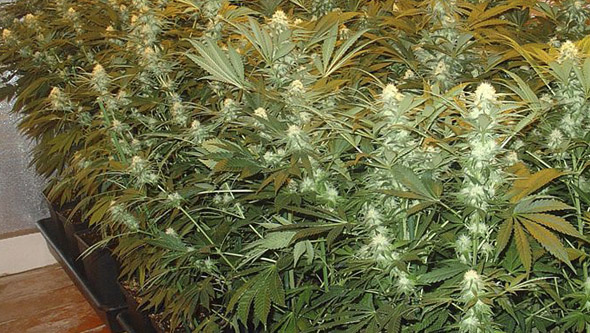
Benefits:
- More contact with plants and individual plant treatment.
Inconveniences:
- It takes more time than other methods such as flooding or automatic watering.
2 – Flood irrigation
This type of watering is where your plants absorb water from a watering tray or flooded tray.
- Place your watering trays. They need to be perfectly level and flat or your plants won’t be evenly watered; some might dry out or some might drown.
- Pour water from the tank (with nutrients if necessary) into the watering tray.
- Try and keep watering from building up over hours; stagnant water is the ideal breeding ground for insects and illness.
- Don’t keep the bottom of the flowerpots excessively moist or this could cause fungi.
- Don’t use expanded clay if you use this method.
- We recommend using textile flowerpots such as Smart Pots to increase root perspiration.
- Keep in mind that mineral salts can build up at the bottom of the flowerpots; you can use enzymes regularly to get rid of any unwanted salts, turning them into nutrients your plants can absorb.
Benefits:
- Much faster system.
Inconveniences:
- Water is more unevenly distributed, as well as nutrients in the substrate when compared to manual and automatic watering.
3 – Automatic Watering
Automatic watering systems are those in hydroponic, aeroponic or flowerpot grows which use a water tank and a pump, pipes and drippers in order to spread water to plants. Some automatic watering systems come with a timer, making them 100% automatic.
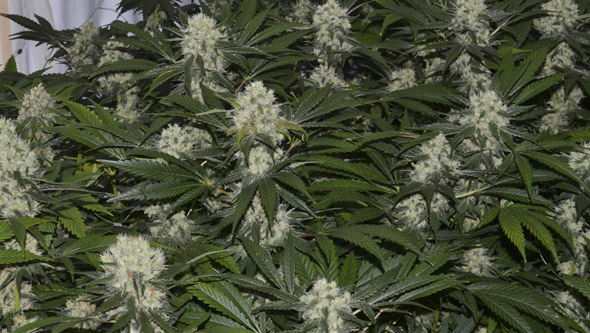
There’s a difference between automatic watering in flowerpots using coco coir or soil and automatic watering for hydroponic and aeroponic systems. In hydro and aeroponic systems, your plants’ roots are in constant contact with air (no light), so they can be constantly watered without any negative side effects.
Automatic watering systems in coco coir or soil should be adjusted in as far as frequency in order to maintain the correct parameters we mentioned before. Allow them to dry out a bit before watering again. Automatic systems are easy to program, so we recommend watering multiple times with small amounts of water.
Keep the pH levels in your water tank stable when watering. When it comes to hydroponic and aeroponic grows, we recommend using a pH adjusting pump; an unstable pH in this type of system can almost instantly ruin your plants.
Benefits:
- Much faster and easier to control.
Inconveniences:
- More expensive and harder to set up, precise pH and EC control absolutely necessary.
Advice
- In outdoor grows, watering frequency is going to depend mostly on the climate. You should water at least every 5 days, although the best rate is about 2 – 3. If your plant needs more water you can use more water, but try to avoid watering every day or you may ruin their roots.
- If you’re using coco coir substrate, it’s more airy and doesn’t retain as much water, so you can water every day drying the flowering period as long as you don’t soak the substrate completely.
- Watering more doesn’t always mean using more nutrients; if you water frequently, you’ll need to use less nutrients, and if you water less often you can use more nutrients – make sure to follow the manufacturer’s recommendations.
- Try to keep the substrate from getting too soaked or dry; the secret is in finding the perfect balance.
